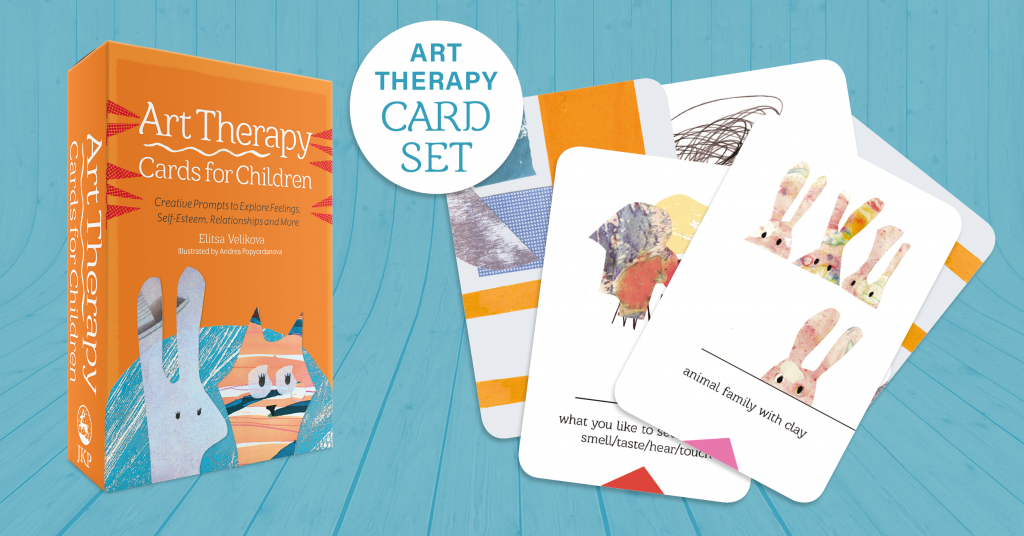 Elitsa Velikova, the author of Art Therapy Cards for Children, writes about how art therapy can help with children’s sleep patterns and shares some ‘creative’ ideas on how to help little ones feel safe and secure before bedtime.
Elitsa Velikova, the author of Art Therapy Cards for Children, writes about how art therapy can help with children’s sleep patterns and shares some ‘creative’ ideas on how to help little ones feel safe and secure before bedtime.
Nightmares BEFORE bedtime
by Elitsa Velikova
Mom is tired. She is thinking “one more hour and the children are going to bed”. Then she will finally have her cup of tea, spend time with her husband, talk to a friend or just switch off and relax.
So, she helps her children brush their teeth, puts their pyjamas on, and off they go to bed ready for a bedtime story!
“Mom, can we please have one more story?”
“Mommy, can I have a glass of water?”
“Mom, I have to pee!”
And so on, until finally, an hour later, mom is sleeping in their beds, while they are still wide awake.
Why is falling asleep such a difficult task for many small children?
What can we do to help them feel relaxed and safe?
Many parents tend to lose their patience when their children start their demands when they are just about to fall asleep. They often think the child is on a mission to torture them, but what they might not realise is that the child can perceive sleep as a ‘separation’ from the parents and can consequently feel anxious.
What can be done to help?
- If you are a parent who spends most of the day at work, make sure you have some ‘special time’ with your child when you get home to play and be together.
- Create a small ritual before saying “goodnight” – maybe you hug or kiss in a particular way that involves being playful; make it a repetitive gesture that happens every night, with a promise to meet in the morning. Repetition helps the child to know that going to bed is routine and that in the morning you will be there. It is also good to keep the time for going to bed the same every day.
- Use the bed only for sleeping (and dreaming). The time before going to bed can be for daydreaming or for imagination games, but avoid very energetic play in bed and never use it as a place for punishment.
- Read stories that are happy and uplifting. The language of imagination is the language of dreams, so whatever story you read, it can carry into your child’s dreams.
- Always create a relaxed atmosphere in the child’s bedroom, with their favourite toys, things that they enjoy to touch, smell, see and hear. Their senses are their comfort zone.
Problems with going to bed usually start to reduce after the age of 5, but there is always a need for creative ways to help the child process the events in their life, their experiences and their feelings; or any other things that might disturb their sleep. I use art therapy cards to help children talk about the things they are experiencing.
Art Therapy Cards for Children – Creative Prompts to Explore Feelings, Self-Esteem, Relationships and More is a new set of art therapy cards I have created to help children to express themselves, gain confidence, understand and transform their behaviour and emotions, and connect with their bodies. The cards come with an accompanying booklet designed to explain each prompt to the parent (or to a therapist), its aims, the materials needed and potential benefits. It also flags activities that can be used to address specific issues, such as anxiety, trauma, and low self-esteem.
Here you can view two samples from the kit – two art therapy interventions, selected by the author, that can be helpful for a child to experience feelings of safety and security.
Use code VEL for a 10% discount when you order these cards from our website before the 31st May.
If you would like to read more articles like this and hear the latest news and offers on our Art Therapies books and resources, why not join our mailing list? We can send information by email or post as you prefer, and please also tell us about your areas of interest so we can send the most relevant information. You can unsubscribe at any time.